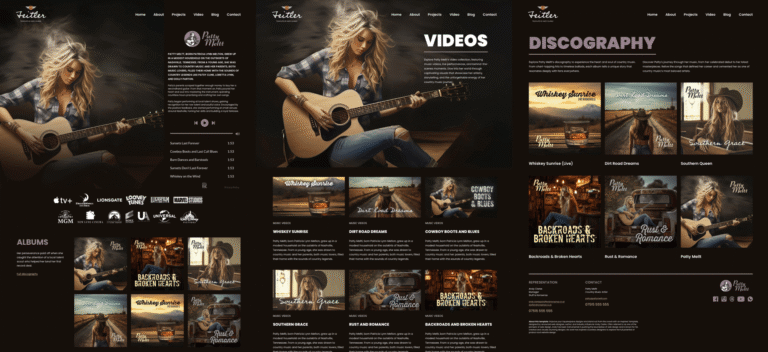Organic marketing helps ecommerce stores grow without having to rely on paid strategies. While advertising drives quick results, organic methods build lasting, sustainable growth by focusing on high-quality content, search engine optimization (SEO), and authentic customer connections.
What is organic marketing, exactly? How can you use it to grow your ecommerce business? This guide explores ten of the best organic marketing ideas — from blogging to word-of-mouth — and shows you how to combine them into a plan that boosts your store’s visibility, trust, and sales.
Organic marketing is any strategy that attracts customers to your ecommerce store without paid ads. Instead of paying for visibility, organic marketing efforts attract more natural attention through valuable content and genuine relationships with your audience built over time.
Unlike advertising, where you’d pay for clicks or impressions, organic marketing helps your store gain traffic through methods like blogging, SEO, social media, and word-of-mouth. It’s about creating content and experiences that naturally draw people in.
A well-written blog post answering your customer’s questions can rank in search engines and drive visitors to your store for months, or even years. Or, a compelling Instagram post can spark engagement and grow your following without costing you anything other than your creative energy.
Organic marketing thrives on consistency, creativity, and authenticity. While it takes time to see results, the payoff is worth it. You walk away with a loyal customer base, higher trust in your brand, and long-term sales growth.
Organic marketing gives ecommerce businesses the tools to grow sustainably without constant paid advertising. Here’s how it benefits your store:
1. Increased brand visibility
Table of Contents
- 1 1. Increased brand visibility
- 2 2. Added trust and credibility
- 3 3. More traffic without ongoing costs
- 4 4. Greater customer loyalty and advocacy
- 5 5. Boosted ROI over time
- 6 6. Better alignment with consumer values
- 7 1. Offer an irresistible product
- 8 2. Define a well-targeted audience
- 9 3. Build a website that converts
- 10 4. Write compelling brand messaging
- 11 5. Set clear goals for organic marketing
- 12 1. Create a blog
- 13 2. Invest in search engine optimization (SEO)
- 14 3. Make video content
- 15 4. Create a social media marketing campaign
- 16 5. Work with influencers
- 17 6. Use affiliate marketing
- 18 7. Build content partnerships and collaborations
- 19 8. Begin podcasting
- 20 9. Get strategic with email marketing
- 21 10. Capitalize on word of mouth
- 22 Share this:
- 23 Like this:
SEO and content creation strategies drive traffic and sales long after you launch them. A well-optimized blog post or viral social media campaign attracts customers for months, or even years.
2. Added trust and credibility
Sharing helpful, non-promotional content shows customers that you understand their needs. This establishes your store as an authority in your niche and strengthens your connection with your audience.
3. More traffic without ongoing costs
SEO, social media, and word-of-mouth strategies bring steady traffic to your site without relying on expensive ad campaigns. These methods free up your resources to focus on other areas of your business.
4. Greater customer loyalty and advocacy
Creating authentic connections with customers inspires loyalty. Satisfied shoppers share your store with others, generating new sales through word of mouth and social sharing.
5. Boosted ROI over time
Organic marketing increases your return on investment as your strategies gain momentum. Unlike ads that stop delivering when you pause your budget, organic efforts continue producing results, making every hour you invest more valuable.
6. Better alignment with consumer values
Modern shoppers value authentic, transparent brands. Organic marketing connects you with these consumers by fostering genuine engagement and delivering content they appreciate.
Successful organic marketing requires time and effort, so you need to prepare before getting started. The goal isn’t just to generate traffic. Rather, it’s to attract potential customers and turn them into loyal buyers. To achieve that, build a strong foundation by focusing on the following:
1. Offer an irresistible product
Solve a real problem or meet a clear need with your product. Validate your product idea through market research, surveys, or a beta launch to ensure it resonates with your audience. Spend time on this step.
2. Define a well-targeted audience
Identify your target audience with as much detail as possible. Figure out their demographics, interests, challenges, and buying habits. The more specific you are, the simpler it becomes to create content that speaks directly to their needs and preferences.
3. Build a website that converts
Showcase your product on a fast, visually-appealing, and uncluttered website. Optimize your product pages with high-quality images, engaging descriptions, and clear calls to action. A trustworthy, well-performing site keeps visitors engaged and encourages purchases.
4. Write compelling brand messaging
Connect with your audience through messaging that resonates emotionally. Share why your product matters and how it fits into their lives. Use a tone and style that align with their values to build deeper connections. This has the added benefit of creating loyalty with consistent effort, too.
5. Set clear goals for organic marketing
Define what you want to achieve, whether it’s increasing traffic, boosting email subscribers, or getting more sales. Setting specific goals keeps you focused and gives you a way to measure your success as you put these strategies into practice.
Organic marketing offers countless ways to grow your ecommerce store and connect with customers without relying on paid ads. Here are ten proven strategies to help you build trust, increase visibility, and boost sales.
1. Create a blog
Blogging ranks among the most effective organic marketing strategies for ecommerce. With a well-crafted blog, you educate your audience, share insights only you can provide, and boost your store’s visibility in search engines.
For example, Yumi features a blog as part of its WooCommerce store and overall content marketing strategy. On their blog, Yumi shares tips, tools, and research for new parents, with content divided into categories by the child’s age.
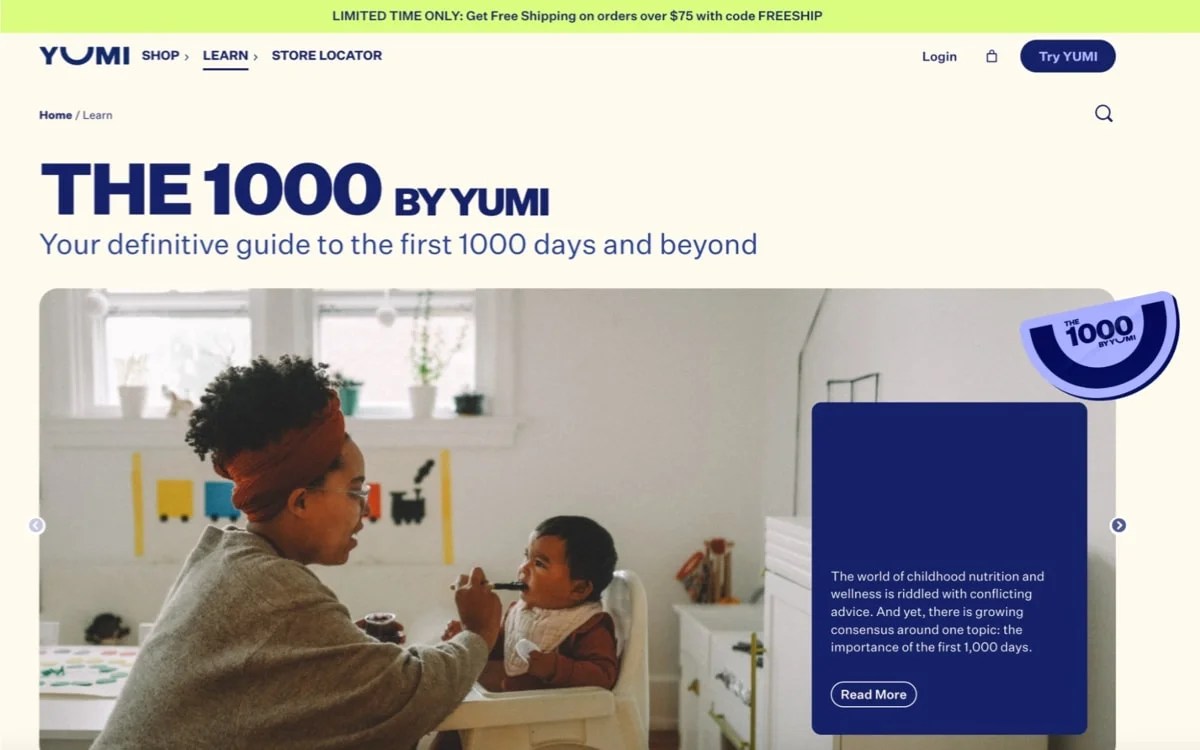
To create a successful blog, focus on topics that suit your brand and speak to your customers’ interests. Provide content like tutorials, answers to common questions, or engaging stories, then optimize your posts for SEO to get more eyes on them.
2. Invest in search engine optimization (SEO)
SEO raises your store’s rank in search results, helping potential customers find your products. When you optimize your site and content for search engines, you can generate a steady flow of organic traffic without relying on ads.
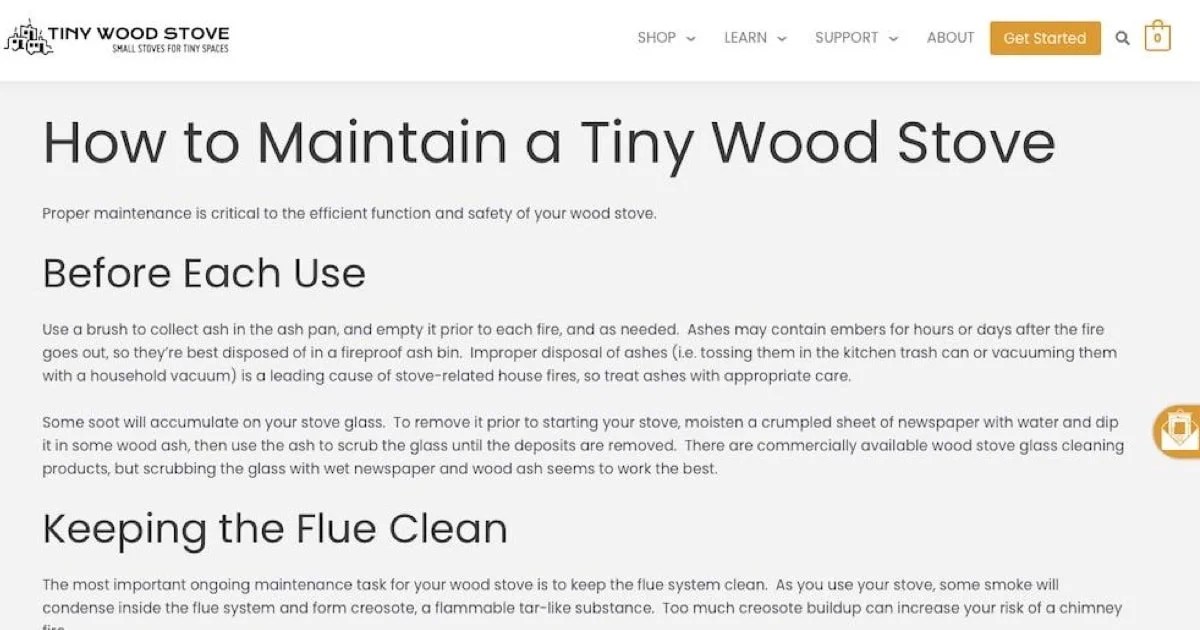
Take Tiny Wood Stove, for example. This business started as a blog sharing practical advice on wood stove installation and off-grid living. Their content, paired with SEO optimization and other types of organic marketing, attracted a niche audience searching for these topics. They addressed specific keywords and created high-value content, which turned their blog into a full-fledged ecommerce business.
To optimize your store for search engines:
- Research keywords your audience uses when looking for products like yours.
- Use those keywords on product pages, including in titles and descriptions, and in blog posts.
- Ensure your site loads quickly and provides a great user experience.
- Use tools like Jetpack Boost to fine-tune your content.
SEO takes time, but the results are long-lasting. Investing in it early, sets your store up for real growth.
3. Make video content
Video content engages your audience and brings your products to life. It shows customers your products in action, teaches them how to use them, and deepens their connection with your brand.
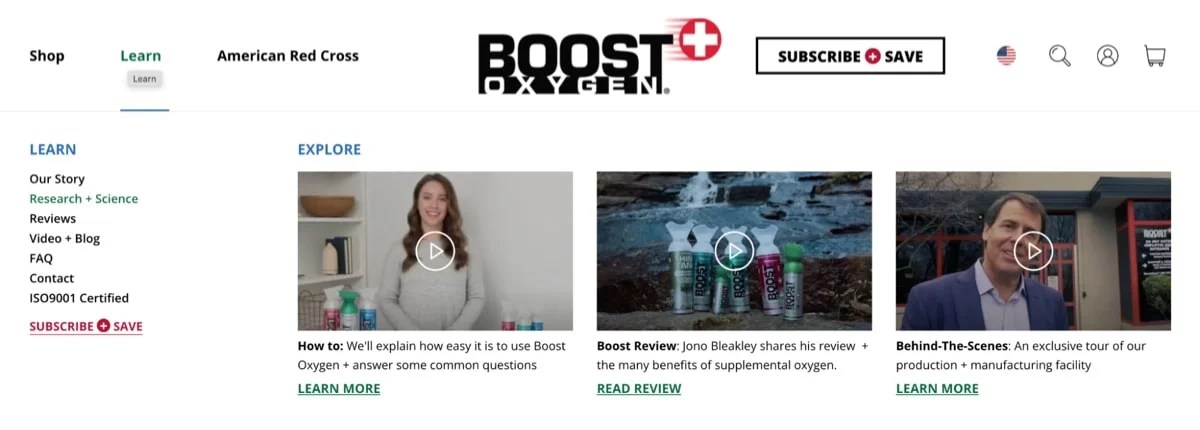
Boost Oxygen, for example, creates video tutorials, behind-the-scenes looks, and reviews that show their products in use and discuss the benefits. They feature these on their homepage, in blog posts, and on product pages so they’re always accessible.
Showing their products in action gives them the opportunity to build trust with potential customers and make it easier to visualize how these items fit into daily routines.
To use this organic marketing strategy, start by creating authentic videos that tell a story, answer customer questions, or entertain. Platforms like TikTok, Instagram, and YouTube are great for reaching new audiences and keeping your content fresh and shareable.
Social media campaigns grow your ecommerce store organically by boosting visibility and building a loyal community. Sharing engaging, on-brand content and encouraging participation drives connections with your audience.
Nalgene uses Instagram to highlight its products and connect with its audience. Their homepage integrates an Instagram feed showcasing user-generated content, and they encourage customers to share their own photos using the branded hashtag #Nalgene.

This organic marketing strategy builds community and provides authentic social proof, which inspires others to engage with the brand.
To replicate this success, consider creating a branded hashtag that encourages followers to share their experiences with your products. Showcase user-generated content on your social channels or website, and use storytelling to build a deeper connection with visitors and followers.
Consistent, authentic engagement on social media platforms turns followers into brand advocates who amplify your message.
5. Work with influencers
Collaborating with influencers is an organic marketing strategy that expands your reach and connects you with established audiences. Influencers build trust with their followers, so their recommendations are more impactful and drive meaningful engagement with your ecommerce store.
Start by identifying influencers whose values and audience fit with your brand. Focus on authenticity. An influencer showing how your product solves a problem or fits into their lifestyle resonates more than generic promotions.
Offer influencers creative freedom to ensure their content feels genuine and relatable, too. Whether it’s a product review, unboxing video, or a tutorial, their personal touch can convert their followers into your customers.
Incorporate influencer videos on your site using a social media feed plugin or extension or by embedding videos into your content. Jetpack VideoPress serves well in this scenario, letting you drag and drop high-quality 60 FPS and 4K videos into WordPress.

Building lasting partnerships with influencers in this way means you create a steady stream of organic traffic and establish your brand as a trusted name in your niche.
6. Use affiliate marketing
Affiliate marketing boosts your ecommerce store’s visibility and sales in a cost-effective way. When you partner with affiliates —bloggers, influencers, or websites — they promote your products in exchange for a commission on each sale they generate.
This strategy excels in organic marketing by using word-of-mouth recommendations and authentic content. Affiliates create blog posts, social media updates, or video reviews that highlight your products, which brings traffic to your store through their unique referral links.
To run a successful affiliate program, offer competitive commissions and equip affiliates with the resources they need, like banners, product photos, and detailed descriptions. A strong program transforms affiliates into ambassadors who genuinely promote your brand while earning income themselves. This is invaluable for organic marketing.
An extension like Affiliate for WooCommerce assists with this and lets you create an affiliate program for your store directly within WooCommerce. Manage affiliates, offer incentives, and pay out referrals from a single dashboard.

Affiliate marketing brings in organic traffic and helps you build credibility through trusted partnerships. The end result is a better reputation and more sales.
7. Build content partnerships and collaborations
Teaming up with businesses, blogs, or creators in your niche amplifies your organic marketing efforts. Content partnerships let you reach new audiences while sharing valuable resources with your own. Collaborations often include co-branded campaigns, cross-promotions, or sharing content on each other’s platforms.
Guest posting offers an especially effective way to collaborate. Writing high-quality articles for established blogs or websites in your industry showcases your expertise and exposes your brand to a new audience, while showing search engines that you’re reputable.. Including backlinks to your ecommerce store then boosts your SEO and drives some traffic to your site.
If you sell fitness products, for example, writing a guest post for a wellness blog about effective workout routines allows you to recommend your gear naturally within the content. These partnerships increase your visibility and establish your brand as a trusted authority in your field. So long as the post is labeled accurately as a guest post (or a sponsored post if a fee is involved), you’ll abide by FTC regulations and get your products in front of a new audience.
8. Begin podcasting
Podcasts engage your audience and build brand authority. Sharing expertise, telling your brand story, or interviewing industry leaders allows you to connect with listeners on a deeper level.
Ecommerce brands use podcasts as an organic marketing tool to share valuable content that matches their audience’s interests. For example, if you sell coffee, creating a podcast about coffee culture, brewing techniques, or sustainable sourcing positions your brand as a thought leader. Providing engaging and informative episodes builds trust and strengthens your connection with your audience.
Tools like Audio Player for WooCommerce make it simple to host podcasts directly on your store. This plugin lets you showcase your episodes alongside your products and create a seamless experience for your customers.

Listeners can learn about your brand while exploring your shop, which increases the chances of conversion.
9. Get strategic with email marketing
Email marketing remains one of the most effective ways to build lasting relationships with your customers and generate organic growth. Sending personalized, relevant content directly to their inbox means you nurture leads, encourage repeat purchases, and keep your brand top of mind.
Using a platform like Klaviyo helps you create targeted email campaigns that cater to different segments of your audience.
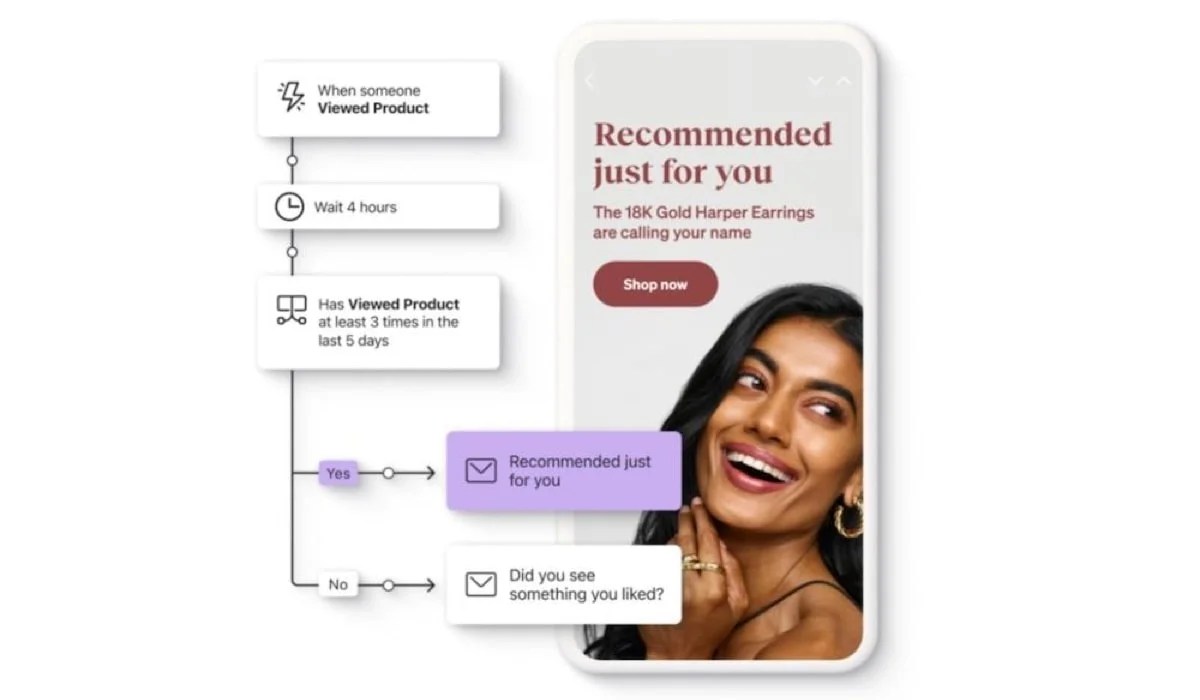
With welcome emails, you can introduce new subscribers to your brand, while abandoned cart reminders bring back potential customers who didn’t complete their purchase. Regular newsletters with product updates, helpful tips, and exclusive offers keep your subscribers engaged and coming back for more.
The key to successful email marketing is to provide value. Focus on solving problems and sharing useful information. Or, offer perks like discounts or early access to new products. When done well, email campaigns turn casual browsers into loyal customers who actively support and recommend your brand to others.
10. Capitalize on word of mouth
Word of mouth serves as a powerful organic marketing option by creating authentic, trust-building recommendations. When customers rave about your products to friends and family, they inspire confidence that no advertisement can replicate. To harness this organic marketing approach, make it straightforward and rewarding for customers to share your brand with others.
Incentivizing referrals is one of the most effective ways to encourage word of mouth. Offer discounts or perks to customers who refer their friends, as well as rewards for the new customers they bring in. “Give $10, Get $10” promotions create a win-win for everyone involved. WooCommerce offers many referral extensions to help you set up quick referral programs that reward sharing. Coupon Referral Program for WooCommerce is one such option that simplifies the process of rewarding customers for sharing coupons and links.
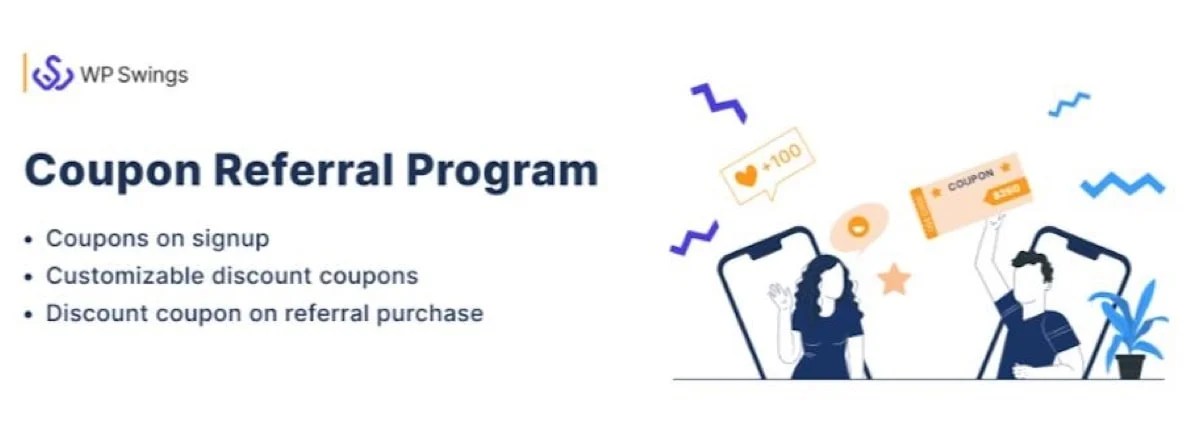
Beyond official programs, give your customers tools to spread the word effortlessly, too. Include social share buttons on your website and product pages to encourage sharing across platforms.
Or, pack a thoughtful postcard or flyer into orders with a personalized referral discount. Something like “Your next order is 20% off when you share this code with a friend,” inspires loyalty while bringing in new traffic.
Organic marketing delivers sustainable, long-term growth, but it isn’t completely “free.” Achieving success with organic strategies requires significant investments in time, resources, or tools. Whether you’re creating blog content, managing social media platforms, or optimizing your website for SEO, someone is pushing these efforts forward. That work does involve a cost.
Paid marketing complements your organic strategy by accelerating results and expanding your reach. Boosting a social media post ensures more people see your content, even if you’re not an expert at figuring out algorithms. Running paid search campaigns captures high-intent traffic while your organic SEO efforts gain traction.
Treat organic marketing and paid marketing as partners rather than competitors. Use organic tactics to build trust and credibility, and amplify those efforts with paid campaigns to reach your goals faster. Here are a few tips to that end:
- Use paid ads to promote high-performing organic content, like a popular blog post or video.
- Run retargeted ads to reach visitors who engaged with your organic content but didn’t convert.
- Allocate a budget to test different audiences or platforms, then refine your organic strategies based on the results.
Ultimately, organic and paid marketing require thoughtful planning and investment. Combining the two brings faster results while building a sustainable, long-term growth strategy for your ecommerce store.
Getting started with organic marketing doesn’t have to be overwhelming. Follow this quick checklist to build a plan that works for your ecommerce store:
- Set your goals. Decide what you want to achieve. Increase site traffic? Grow your email list? Boosting sales? Clear goals will guide your strategy and keep you focused.
- Choose your tactics. Pick a mix of strategies that match your goals and the resources you have on hand.
- Create a content calendar. Plan your posts ahead of time. Come up with blog topics, topic outlines, and email campaigns in advance. A consistent schedule helps you stay organized and regularly engage your audience.
- Set a budget. Even organic marketing requires resources. Account for tools (like Klaviyo for email marketing or an SEO plugin), time investments, or a small ad spend to boost your efforts when needed.
- Start small and scale. Focus on one or two tactics at first, measure your results, and refine your approach. Once you’ve got those sorted out, expand to additional strategies.
An investment in your own organic marketing strategy is an investment in your store’s future by building trust, engaging your audience, and creating valuable content. These efforts drive long-term growth without relying solely on paid ads. WooCommerce provides the tools you need to implement and scale organic strategies, from creating content to streamlining your processes.
With WordPress and WooCommerce, you can create a blog to share educational content, tips, and stories. You can optimize your product pages and posts using SEO tools and plugins. You can also nurture leads and boost sales by sending out regular email marketing messages.
Tracking your progress is just as important as implementing your strategies. Tools like Jetpack Stats allow you to monitor your site’s performance, track traffic, and understand what resonates with your audience. This data helps you refine your approach and double down on what works.
Combining the flexibility of WooCommerce with a strong organic marketing strategy means you can create a store that’s visible, trusted, and loved by customers. Start implementing these ideas, and watch your ecommerce business steadily grow.
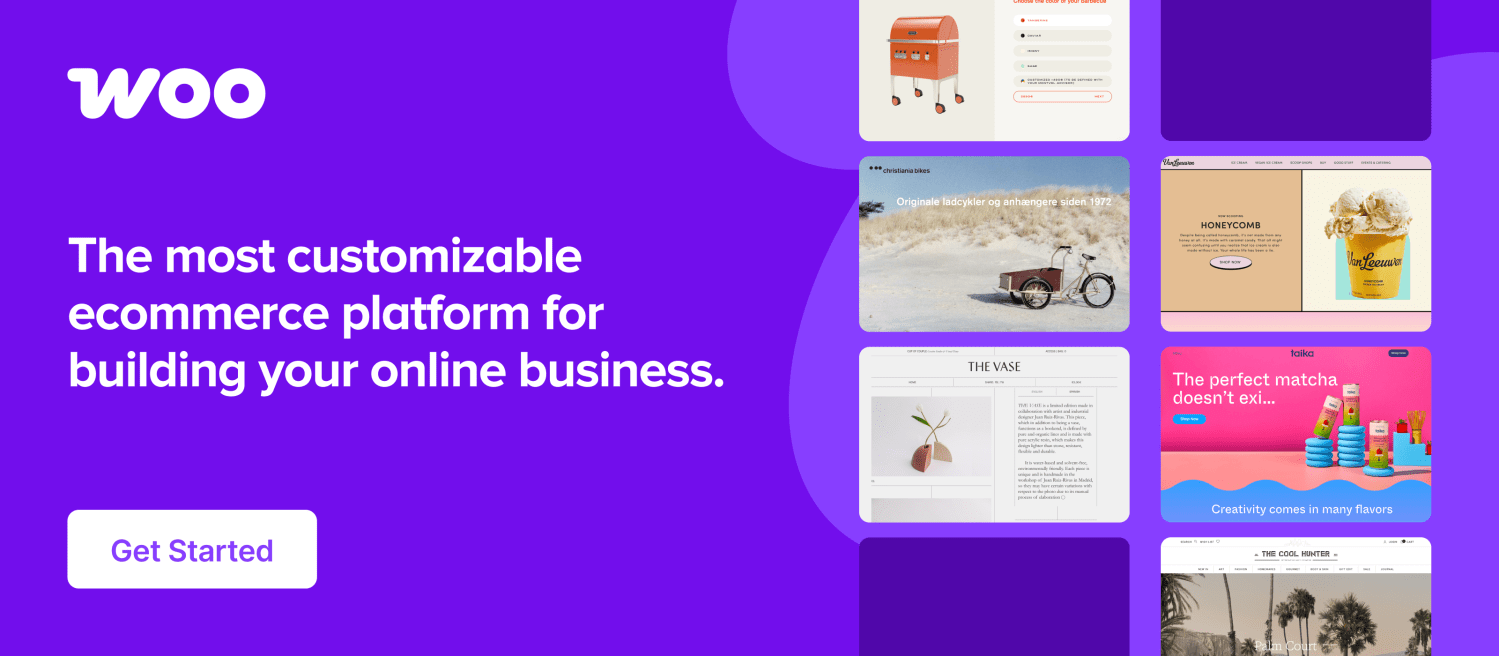
About
Vanessa Petersen
Vanessa has spent her career writing helpful things for people across the tech space. Outside of work, she enjoys training for triathlon, rotating through hobbies, and exploring new places both urban and natural. She has two fluffy cats, maintains a few succulents, and has far too many books on her TBR shelf.




